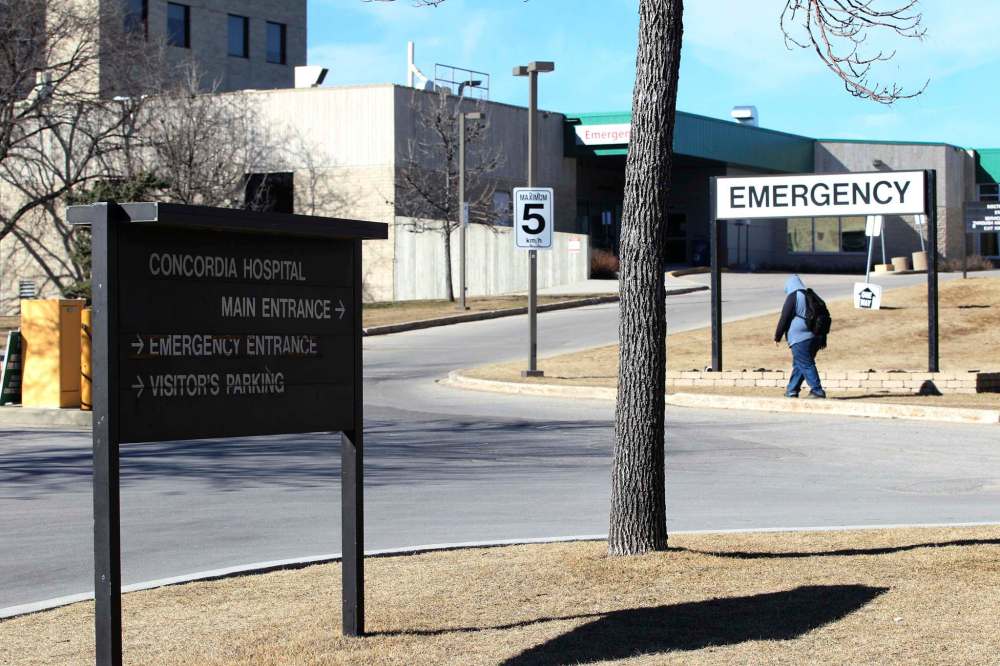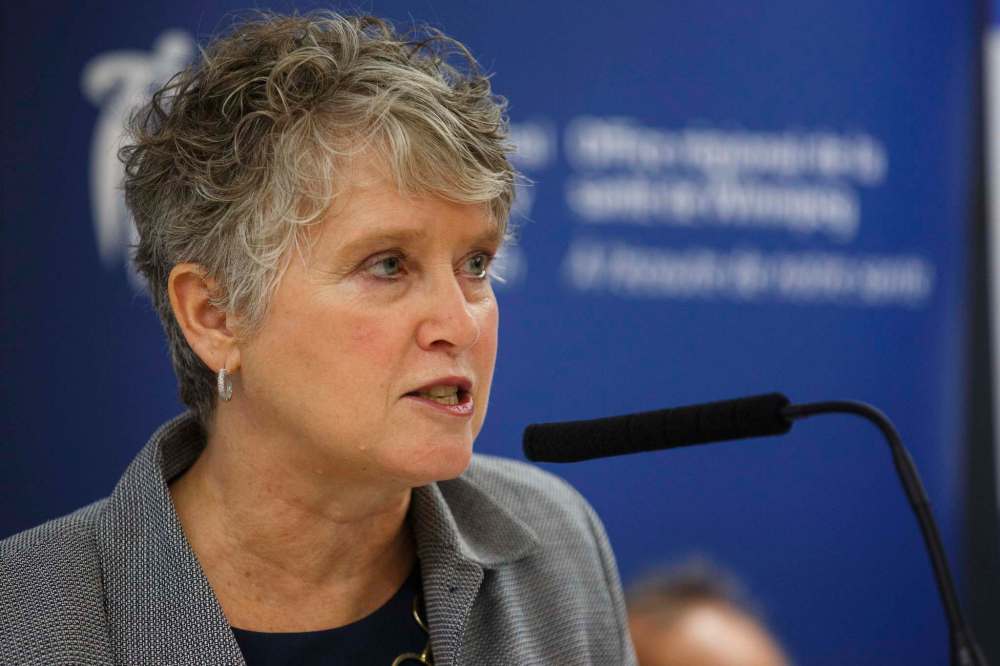Progress made on wait times at city ERs: report
Figures taken before health-care overhaul, NDP says
Advertisement
Read this article for free:
or
Already have an account? Log in here »
To continue reading, please subscribe:
Monthly Digital Subscription
$1 per week for 24 weeks*
- Enjoy unlimited reading on winnipegfreepress.com
- Read the E-Edition, our digital replica newspaper
- Access News Break, our award-winning app
- Play interactive puzzles
*Billed as $4.00 plus GST every four weeks. After 24 weeks, price increases to the regular rate of $19.00 plus GST every four weeks. Offer available to new and qualified returning subscribers only. Cancel any time.
Monthly Digital Subscription
$4.75/week*
- Enjoy unlimited reading on winnipegfreepress.com
- Read the E-Edition, our digital replica newspaper
- Access News Break, our award-winning app
- Play interactive puzzles
*Billed as $19 plus GST every four weeks. Cancel any time.
To continue reading, please subscribe:
Add Free Press access to your Brandon Sun subscription for only an additional
$1 for the first 4 weeks*
*Your next subscription payment will increase by $1.00 and you will be charged $16.99 plus GST for four weeks. After four weeks, your payment will increase to $23.99 plus GST every four weeks.
Read unlimited articles for free today:
or
Already have an account? Log in here »
Hey there, time traveller!
This article was published 30/11/2017 (2880 days ago), so information in it may no longer be current.
Most people who went to a Winnipeg emergency room waited two hours longer than the average Canadian to be assessed by an ER doctor last year.
Nine out of every 10 patients who went to a Winnipeg ER were seen in about five hours or less, according to a new report from the Canadian Institute for Health Information (CIHA), while that window for assessment drops to approximately three hours or less for the average Canadian.
The wait was longest at Concordia Hospital and Victoria General Hospital, where 90 per cent of patients were seen in roughly six hours or less. While it’s a slight improvement from a year earlier, the Winnipeg Regional Health Authority isn’t celebrating yet.

“We still have a long way to go,” said the region’s interim chief operating officer, Lori Lamont, during a technical briefing for media Wednesday that was embargoed until the report’s release on Thursday.
Every year, CIHI issues a report called Your Health System, which tracks a number of health indicators across the country, from issues of access, appropriateness and effectiveness of care to safety and more. This year, Lamont focused primarily on data collected on emergency departments, an area in which the WRHA has consistently struggled and which is undergoing the most drastic transformation Winnipeg’s health-care system has experienced in two decades.
From 2015-16 to 2016-17, the WRHA shaved roughly 27 minutes off of most people’s ER wait times, Lamont said, an eight per cent improvement that represents the most significant time reduction reported Thursday.
“It’s a really important milestone,” she said, but “we’re by no means satisfied with that result.”
Health Minister Kelvin Goertzen had a similar reaction. “We’re happy that we’re going in the right direction, but I won’t spend five minutes celebrating it. We’ll continue to make better improvements for next time,” he said outside the legislative chamber.
However, NDP health critic Andrew Swan wondered what the results would be in the future — once the government’s controversial overhaul of ER services is implemented. He noted that the reporting period for the CIHI study predates the closure of the Misericordia Urgent Care Centre and the transformation of Victoria hospital’s ER to an urgent care centre. Concordia Hospital is also to see its emergency room close and Seven Oaks will see its ER be transformed into an urgent care centre in the not-too-distant future.
Like most of the rest of the country, the WRHA continues to struggle with how long people stay in an emergency department before being discharged or admitted to the hospital.
Per the 2016-17 figures, nine out of 10 of the Winnipeg patients who required hospital admission were spending up to 43.5 hours in the ER, an increase of nearly eight per cent from a year earlier.
While that’s comparable with percentage increases across the country, most of those Winnipeg ER visits are still nearly 11 hours longer than the average Canadian visit.
“This is really something that’s a system issue,” said Kira Leeb, CIHI’s director of health system performance.
If it was just one hospital, she said, it would be a simpler matter of taking a closer look at how care in and out of the hospital is being organized.
“But this is really across the board,” Leeb said. “Everybody is really struggling to make improvements on it and, in fact, it’s getting worse.”
But for Winnipeg, at least, Lamont expects next year’s CIHI report may tell a different story.
So far this year, she said, the wait time for nine out of 10 visitors to the ER has dropped nearly 15 per cent — to 4.3 hours or less — while the length of stay for most has dropped nearly 30 per cent to just over 30 hours.

She said that’s due in large part to changes to system flow.
“This is very much a domino,” Lamont said.
To help free up emergency department space, the WRHA not only needs alternative places for people to seek out more minor care, it also needs systems in place to help move people swiftly into inpatient beds if they need it or supports in place if they can go home or back into the community.
In particular, Lamont said, a transition to a paperless bed-management system has been “a game changer.”
The WRHA now uses an electronic system to monitor real-time bed capacity both in the ERs and inpatient units, meaning staff in the ER are instantly informed when an inpatient bed opens up for an ER patient to move into.
“The staff in emergency knows it’s empty because they can see it,” she said, “whereas before they were relying on someone to call them and say they were ready to take the patient.”
While the WRHA has typically had a “tougher time” with wait times in the emergency department in winter months, in part owing to flu season, Lamont said the hope is the system will be able to maintain its progress for the rest of the 2017-18 year.
“Our goal will be to, if not sustain that number, at least sustain the improvement year over year,” she said.
jane.gerster@freepress.mb.ca
History
Updated on Thursday, November 30, 2017 10:23 AM CST: Corrects reference to patients
Updated on Thursday, November 30, 2017 10:46 AM CST: Minor edits
Updated on Friday, December 1, 2017 7:37 AM CST: Adds web fact box

